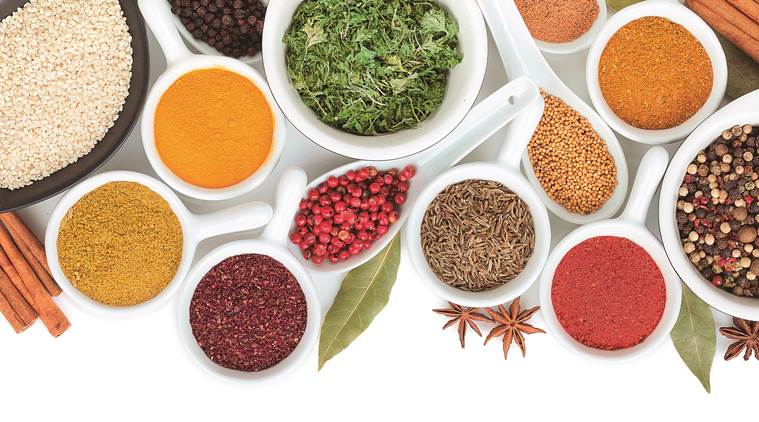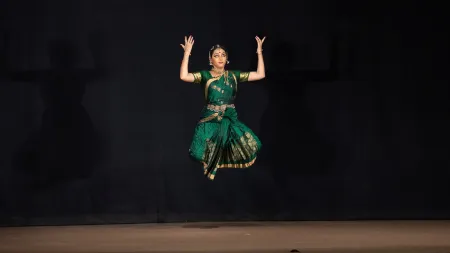- India
- International
Sea, Sand, Shacks and…
A culinary initiative now adds a fourth S to Goa — the hereditary food of the Saraswat Brahmins.
 The Saraswat Brahmins lived off the produce of the earth and their diet was rich in fruit, vegetables and spices grown in their gardens — breaking the myth that Goan food is only non-vegetarian.
The Saraswat Brahmins lived off the produce of the earth and their diet was rich in fruit, vegetables and spices grown in their gardens — breaking the myth that Goan food is only non-vegetarian.
Away from the beaches of Goa, where chefs heap trays with lip-smacking prawns, crabs and other seafood for holiday crowds, the ancestral food of a community has remained a guarded secret for several centuries. Women of the Saraswat Brahmin households are the customary custodians of this knowledge, passed on by word of mouth to every new daughter-in-law. Their kitchen is as wrapped in mythology as the history of the fish-eating Brahmins — and a world apart from the commercially-rustic shacks of Goa. The Serendipity Arts Festival last month showcased some of the delicacies, curated by Odette Mascarenhas, to wide acclaim.
Watch What Else Is In News?
Mascarenhas is co-founder of the Goan Culinary Club, which is working towards preserving the authenticity of Goan cuisine. Built on her book The Culinary Heritage of Goa (winner of the Best in the World for Historical recipes award), she planned a platter that challenged the vindaloo-eating visitor’s idea of Goan food. Excerpts from an interview:
Hidden Histories
People from outside Goa have only explored the last influence, which I categorise as the Christian Goan cuisine. This includes the vindaloo, fish curry (the Catholic take on the original hooman), sorpotel and raechad. When I was working on The Culinary Heritage of Goa with the help of the chefs of the Goan Culinary Club, we explored different influences on the history and food of Goa — the Saraswat Goan, Hindu centric, Muslim Goan and Portuguese — that were later spiced up to suit the local palate and thus establish the Christian Goan cuisine.
As we moved around from taluka to taluka doing our research, we found homemakers sharing the recipes of the Saraswat Brahmin influence, which was so different in taste from those usually served in commercial establishments.
According to myth and folklore, Saraswat Brahmins were people who lived along the river Saraswati and ate fish. As the river ran dry, they were guided by lord Parshuram to Goa where rivers and seas gave them ample fish. They came in groups and names of places in Goa still recall their numbers — Bardez comes from Baradesh, which had hosted 12 families, while Tiswadi was Teeswadi for its 30 families
Leafy Delight

The Saraswat Brahmins lived off the produce of the earth and their diet was rich in fruit, vegetables and spices grown in their gardens — breaking the myth that Goan food is only non-vegetarian. Fish came from the river and the sea.
The Saraswat Brahmins followed a vegetarian routine at least once a week, and their cuisine is packed with vegetarian dishes. Their food habits were decided by the natural and health effects of the ingredients. It was easy for us to record their preparations as the daughter-in-law had to learn the cooking from her mother-in-law or the eldest daughter of the house she was married into.
Plating Up
I was lucky to be introduced to the mother of the owner of the restaurant Voltaire, Sangam Pai Dunghat. Their recipes used homemade masalas. Their chillies are different from what is found in commercial establishments. We tried to inform visitors that the chillies that play an important role in Saraswat food are not Kashmiri chillies but Sankeshwari or Canacona chillies, depending on whether one is in the North or the South of the state.
The Saraswat Brahmin Hooman looks and tastes different from the Catholic Fish Curry Kodi. Till Voltaire opened its doors, many of these preparations were only served in homes. There was the concept of the khanavats or canteen-like local eating house of the Portuguese era, which is different from the tavernas that people know exist in Goa.
Girish Desai’s Kokni Kanteen, which was a part of Serendipity, was the closest one could find to the khanavats that still exist in the remote talukas of Goa.
Apr 19: Latest News
- 01
- 02
- 03
- 04
- 05


































